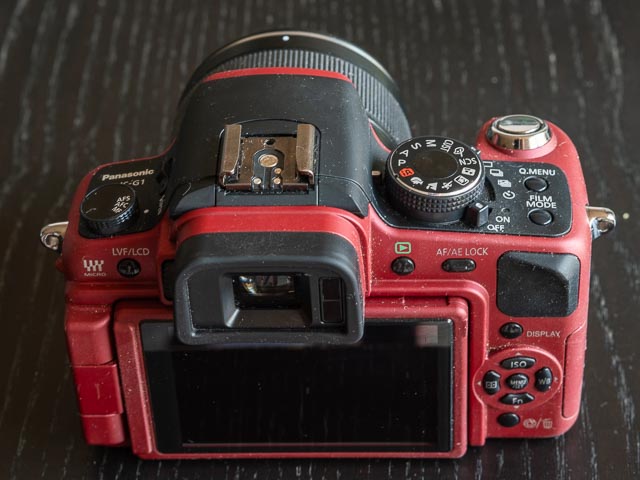Panasonic Lumix DMC-G1

Contents & specification summary
| Launch date | September 2008 |
|---|---|
| Camera type | Mirrorless interchangeable lens camera (SLR style) |
| Camera size | 124 x 84 x 45 mm 360 grams (inc. battery) |
| Sensor type | Live MOS |
| Sensor size | 4/3" (17.3 x 13 mm) |
| Resolution | 4000 x 3000 (12 megapixels) |
| Memory card | SD/SDHC |
| Battery | DMW-BLB13 |
| Lens | Interchangeable - Micro Four Thirds mount |
Introduction
The word "revolutionary" is massively over-used these days. It's often used to mean something that is great, different or unique. But that's not enough to be truly revolutionary. In order to genuinely deserve that word you have to take an entire industry and dramatically change the way everyone (or almost everyone) approaches it. Revolutionising an industry isn't always quick. Sometimes it can take years to happen, but when it does you can usually trace that revolution back to specific product.
In the world of photography, the camera on this page, perhaps more than any other, really does deserve to be called revolutionary, despite it's rather plain-jane looks. The Panasonic Lumix DMC-G1 (I'll just called it the G1 from now on) was the very first example that contains all the essential features of what today are usually called a "mirrorless" cameras: interchangeable lenses, a large DSLR sized sensor, and an electronic viewfinder of some description and continuous live-view as the main way to frame your photographs.
Reading contemporary reviews of the G1 is interesting because it is clear that no-one was quite sure at first what to call this new class of cameras! EVIL (electronic viewfinder interchangeable lens) was a popular acronym early on (perhaps that one failed as it didn't have the word 'camera' in it), while my personal favourite was CSC (compact system camera). But it was MILC (mirrorless interchangeable lens camera), now almost always shortened to just 'mirrorless', that eventually won the day. Defining a whole class of cameras by a feature they lack (I.e. the mirror") is fraught with problems… after all, lots of camera don't have a mirrors and so could sensibly be called mirrorless! But mirrorless was the term that won the popular vote, so who am I to argue  .
.
The G1 was also the first camera to use the Micro Four Thirds standard (usually referred to as M4/3). The primary inventors of this standard were Panasonic and Olympus. But the idea was that this was an open standard that anyone could sign up to. Regardless of who makes the product, if it conforms to the M4/3 standard, it should work with any other product that conforms to the standard. There's no doubt that Panasonic and Olympus wanted the M4/3 system to be revolutionary, but it wasn't. Very few other companies ever made M4/3 cameras and most of the photographic industry is still based around proprietary systems from each company that are incompatible with each other (just try putting a Nikon lens on a Canon camera!). But while the idea of an open standard didn't (unfortunately!) revolutionise photography, the idea of interchangeable lens cameras with live-view and electronic viewfinders instead of prism/mirror based optical viewfinders most certainly did!
+ Specification
| Body type | ||
|---|---|---|
| Body type | SLR-style mirrorless | |
| Sensor | ||
| Max resolution | 4000 x 3000 | |
| Other resolutions | 2816 x 2112, 2048 x 1536, 4000 x 2672, 2816 x 1880, 2048 x 1360, 4000 x 2248, 2816 x 1584, 1920 x 1080 | |
| Image ratio w:h | 4:3, 3:2, 16:9 | |
| Effective pixels | 12 megapixels | |
| Sensor photo detectors | 13 megapixels | |
| Sensor size | Four Thirds (17.3 x 13 mm) | |
| Sensor type | Live MOS | |
| Image | ||
| ISO | Auto, 100, 200, 400, 800, 1600, (3200 with boost) | |
| Boosted ISO (maximum) | 3200 | |
| White balance presets | 6 | |
| Custom white balance | Yes | |
| Image stabilisation | Optical | |
| Uncompressed format | RAW | |
| JPEG quality levels | Fine, Standard | |
| Optics & Focus | ||
| Autofocus | Multi-area, Selective single-point, Single, Continuous, Live View | |
| Digital zoom | Yes (4x) | |
| Manual focus | Yes | |
| Lens mount | Micro Four Thirds | |
| Screen / viewfinder | ||
| Articulated LCD | Fully articulated | |
| Screen size | 3″ | |
| Screen dots | 460,000 | |
| Touch screen | No | |
| Live view | Yes | |
| Viewfinder type | Electronic | |
| Viewfinder coverage | 100% | |
| Viewfinder magnification | 0.7× | |
| Photography features | ||
| Minimum shutter speed | 60 sec | |
| Maximum shutter speed | 1/4000 sec | |
| Aperture priority | Yes | |
| Shutter priority | Yes | |
| Manual exposure mode | Yes | |
| Subject / scene modes | Yes | |
| Built-in flash | Yes (Pop-up) | |
| Flash range | 10.50 m | |
| External flash | Yes (Hot-shoe) | |
| Flash modes | Auto, On, Off, Red-Eye, Slow Sync | |
| Continuous drive | 3.0 fps | |
| Self-timer | Yes (2 or 10 sec) | |
| Metering modes | Multi, Center-weighted, Spot | |
| Exposure compensation | ±3 (at 1/3 EV steps) | |
| Storage | ||
| Storage types | SD/MMC/SDHC card | |
| Storage included | None | |
| Connectivity | ||
| USB | USB 2.0 (480 Mbit/sec) | |
| HDMI | Yes | |
| Remote control | Yes | |
| Physical | ||
| Environmentally sealed | No | |
| Battery | Battery Pack | |
| Battery description | Lithium-Ion rechargeable battery & charger | |
| Weight (inc. batteries) | 360 g (0.79 lb / 12.70 oz) | |
| Dimensions | 124 x 84 x 45 mm (4.88 x 3.31 x 1.77″) | |
| Other features | ||
| Orientation sensor | No | |
| Timelapse recording | No | |
| GPS | None | |
Using a Panasonic Lumix DMC-G1 in 2025
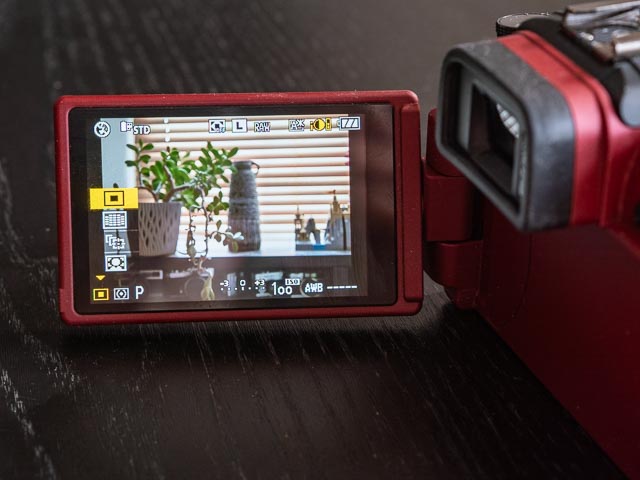 The G1 is a bit of an odd duck to use. It seems Panasonic were still trying to work out exactly how the user interface of an SLR style camera with an electronic viewfinder and full-time live-view should be laid out and work. For example there is a "Q.Menu" button for quick access to almost anything you might need to adjust while shooting… but unlike the quick menus on most modern cameras, instead of a full screen of tiles you navigate using a four way controller, you use the left/right buttons of the four-way controller to navigate between icons at the top and bottom of the screen, and the up/down buttons to change setting. This has the big advantage of not obscuring the live-view too much, and I thought it worked quite well (once I'd got used to it, that is!).
The G1 is a bit of an odd duck to use. It seems Panasonic were still trying to work out exactly how the user interface of an SLR style camera with an electronic viewfinder and full-time live-view should be laid out and work. For example there is a "Q.Menu" button for quick access to almost anything you might need to adjust while shooting… but unlike the quick menus on most modern cameras, instead of a full screen of tiles you navigate using a four way controller, you use the left/right buttons of the four-way controller to navigate between icons at the top and bottom of the screen, and the up/down buttons to change setting. This has the big advantage of not obscuring the live-view too much, and I thought it worked quite well (once I'd got used to it, that is!).
Obviously that electronic viewfinder, rear monitor and full-time live-view is a big part of what differentiates this camera from it's contemporary DSLR competitors, and Panasonic went to great lengths to make the most of this. So unlike on an DSLR you can get a live preview of the effect of the various options available by using the "film mode" button, like monochrome modes. Panasonic also included a live preview of the effect that your selected shutter speed would have on your photo, another thing that you could never do in an old fashioned optical SLR viewfinder.
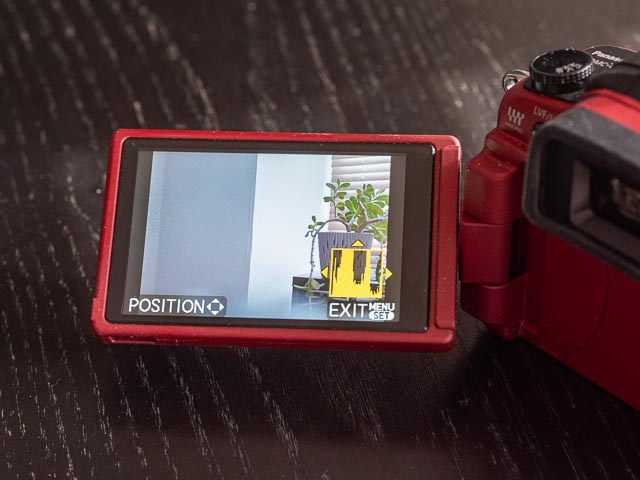 Of course there is the option to include a full-time histogram in the view-finder to assist in getting the exposure right… what is more surprising is the option to move the histogram around to any place you desire. I don't recall seeing that on any other camera and it is really rather useful, so I'm not sure why this idea didn't catch on more widely.
Of course there is the option to include a full-time histogram in the view-finder to assist in getting the exposure right… what is more surprising is the option to move the histogram around to any place you desire. I don't recall seeing that on any other camera and it is really rather useful, so I'm not sure why this idea didn't catch on more widely.
 Another thing that's easy to do with an electronic viewfinder is include guide lines for things like using the principle of thirds in your composition, so as expected that is an option on the G1. But again Panasonic included an option I don't think I've ever seen on any other camera: an option for two guidelines you can position at will, very useful when you want to ensure a particular item is always in the same position in a series of still lifes.
Another thing that's easy to do with an electronic viewfinder is include guide lines for things like using the principle of thirds in your composition, so as expected that is an option on the G1. But again Panasonic included an option I don't think I've ever seen on any other camera: an option for two guidelines you can position at will, very useful when you want to ensure a particular item is always in the same position in a series of still lifes.
I always find rear monitors that only articulate on the horizontal axis a bit frustrating as I tend to use portrait/vertical orientation a lot in my photography, so it's great that Panasonic went to the trouble of making the rear monitor of the G1 fully articulated. But we have to remember that we are dealing with 2008 technology hear, so the rear monitor washes out easily in bright sunlight, and the eye-level viewfinder shows a lot of RGB tearing as you move the camera around. But never-the-less, full marks to Panasonic for going to a huge amount of effort to make the most of possibilities of full-time live preview!
The general handling of the G1 is pretty good, with a nice grip and a good selection of external controls. The only aspect of the handling I found really annoying is the main control dial just below the shutter button. It is actually serves a double function: normally it controls aperture or shutter speed, but you can also push it in with a click to switch to exposure compensation (or to switch between aperture and shutter speed in manual mode). In theory this sounds great, but it's really easy to click the command dial by accident which can cause a lot of confusion.
And the SLR style handling and body shape perhaps sets up expectation that the technology of 2008 just couldn't meet. Focusing on still objects with the contrast-detect AF system is actually perfectly useable, so long as you have reasonably bright conditions (there's even basic face detection). But continuous/tracking AF on moving subjects is where things really start to fall apart. Any SLR, even a basic entry level model, will have no difficulty wiping the floor with the G1!
The Panasonic Lumix DMC-G1 vs. the Olympus Pen E-P1
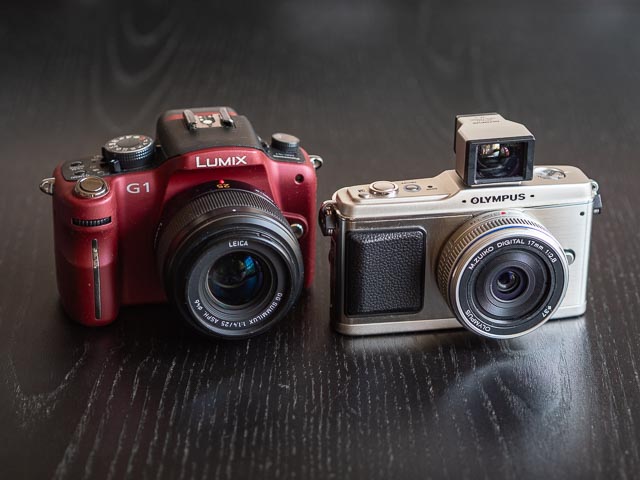 With the M4/3 system being a collaborative effort between Panasonic and Olympus, they both came out with M4/3 based mirrorless cameras in quick succession: the G1 was launched in September 2008, and 9 months later Olympus announced the E-P1 in June 2009. It seems likely that Panasonic and Olympus agreed in advance to release very different styles of camera as their first launches to demonstrate the versatility of the concept, with Panasonic drawing the "SLR style" card and Olympus the "rangefinder style" card.
With the M4/3 system being a collaborative effort between Panasonic and Olympus, they both came out with M4/3 based mirrorless cameras in quick succession: the G1 was launched in September 2008, and 9 months later Olympus announced the E-P1 in June 2009. It seems likely that Panasonic and Olympus agreed in advance to release very different styles of camera as their first launches to demonstrate the versatility of the concept, with Panasonic drawing the "SLR style" card and Olympus the "rangefinder style" card.
I've read reports that the G1 was not a sales success for Panasonic, and I think I can see why. Like I said, the G1's DSLR style body sets up expectations of SLR style autofocus performance which its contrast-detect AF system simply couldn't even come close to. Rather than competing directly with DSLRs, Olympus's slim, compact and stylish rangefinder style camera fell naturally into the role of the ideal companion to a DSLR for when you wanted to travel light for a spot of casual but high-quality snap-shooting, thereby relieving it of the need to beat a typical DSLR on focus performance. That's exactly why I bought an E-P1: so I could have a tiny camera capable of creating DSLR quality images that was small enough to carry with me where ever I went.
Plus… just look at them! If these cameras were characters from a cartoon about a gang of mystery-solving teenagers and their daft pooch, the E-P1 would be glamorous Daphne while the the G1 would be sensible, dependable, but unexciting, Thelma  . The Olympus still has the power to take my breath away with its beauty when it comes out of its box. Let's face it: the G1, even in a posh red frock, does not do that!
. The Olympus still has the power to take my breath away with its beauty when it comes out of its box. Let's face it: the G1, even in a posh red frock, does not do that!
Panasonic seemed to realise they'd given away the ace card to Olympus, because their next camera was the similarly rangefinder style GF1, launched just 3 months after the E-P1 alongside the 20mm f/1.7 pancake lens. The GF1/20mm pancake pairing is still one of Panasonics most fondly remembered and sought after cameras to this day. It took another 10 years before technology allowed mirrorless cameras to genuinely compete with DSLRs on AF performance, at which point larger DSLR style mirrorless cameras started to overtake their compact rangefinder style cousins in popularity.
Buying a Panasonic Lumix DMC-G1 in 2025
So, with these early mirrorless models, it tends to be the compact rangefinder models that get all the attention on the used market. The Panasonic GF1 and the Olympus E-P1 will likely cost you as much as twice what a G1 will cost for an example in similar condition. But because the M4/3 system is still very much a current system in active development by both Panasonic and Olympus, the G1 will still cost a little more than a DSLR of a similar specification and vintage. I paid £55 for my example from CeX. It was in very good condition and complete with battery, charger and a good warranty. Fortunately, as a long time M4/3 user, I didn't need to buy any lenses, because adding the standard 14-45mm kit lens would probably have pushed the price up to £100 or more.
One thing to watch out for with the G1 though is the potential of the rubberised coating to disintegrate and go horribly sticky. I've seen stories on the 'net of people having to go to great lengths to completely remove the rubberised coating, which leave you with the shiny plastic camera underneath. But the rubber coating on my red G1 was actually fine! It was a little sticky and dusty, but a thorough wipe down with a slightly dampened cloth, left it looking great and with hardly any stickiness at all. Perhaps the coloured options (the G1 was available in blue and red, as well as standard black) are less susceptible to the deterioration the black model often suffers?
Panasonic Lumix DMC-G1 results
I have to admit the images from the G1 didn't really have the wow factor for me. There's nothing wrong with them (although the dynamic range isn't quite as good as most modern cameras, resulting in more blown highlights than I might expect witha more modern camera). If I had no other choices I'd happily use the G1 for serious photographic work, but they don't have the 'je ne sais quoi' of some of the other vintage digital cameras I have tried (for example, the Olympus E-500).
Leica DG Summilux 25mm f/1.4 Asph.
Though I have plenty of M4/3 lenses, I only have one Panasonic lens: the Panasonic Leica DG Summilux 25mm f/1.4 Asph. So I decided it would be fun to do some single lens shooting with the G1. (As a bonus I was glad to find my Panasonic Leica 25mm lens didn't produce the subtle rattle-snake sound it does when mounted on one of my Olympus M4/3 cameras.) All the photographs below where lightly processed to taste in Adobe Lightroom (with the exception of the one b&w photograph that was processed in Silver Efex Pro 2).

f/1.4 - 1/2500 sec - 160 ISO

f/1.4 - 1/320 sec - 100 ISO

f/1.4 - 1/400 sec - 100 ISO

f/1.4 - 1/500 sec - 100 ISO

f/6.3 - 1/80 sec - 100 ISO

f/1.4 - 1/1600 sec - 100 ISO

f/1.4 - 1/2500 sec - 100 ISO

f/2.2 - 1/250 sec - 100 ISO

f/1.4 - 1/400 sec - 100 ISO

f/1.4 - 1/3200 sec - 100 ISO
Film modes
The G1 has a selection of film modes available from the film mode button on the top plate. Here are examples of all nine film modes. These are all straight out of camera JPEGs. As you can see the film modes are fairly subtle, and not unattractive. Unlike Fujifilm, who of course have a long history of fondly remembered analogue films, Panasonic have not given these modes names that recall analogue film names. I think the Dynamic B&W, Nature and Nostalgic film modes are my favourites.
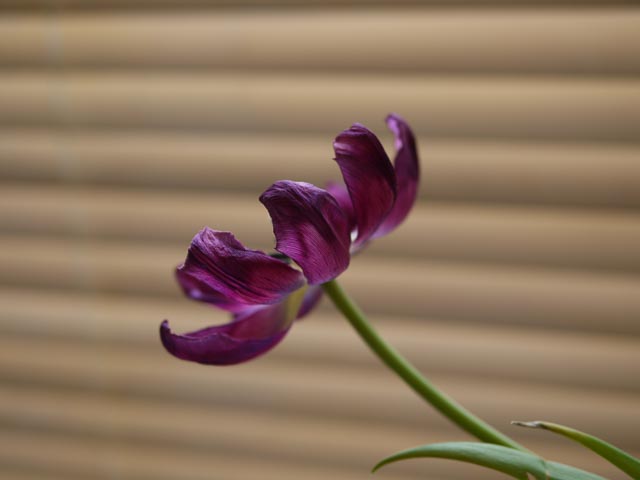
'Standard' film mode
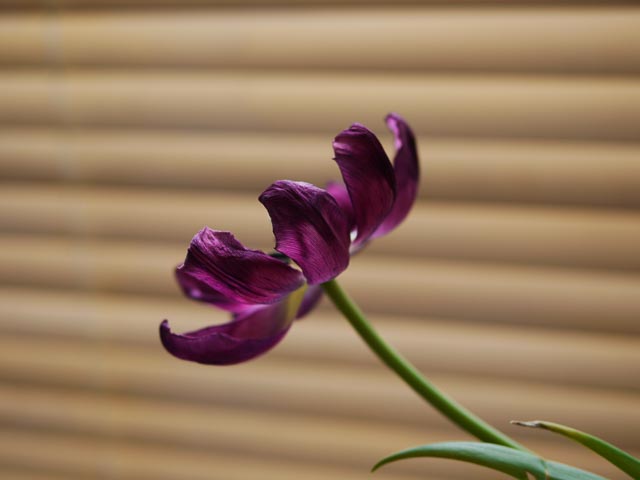
'Dynamic' film mode
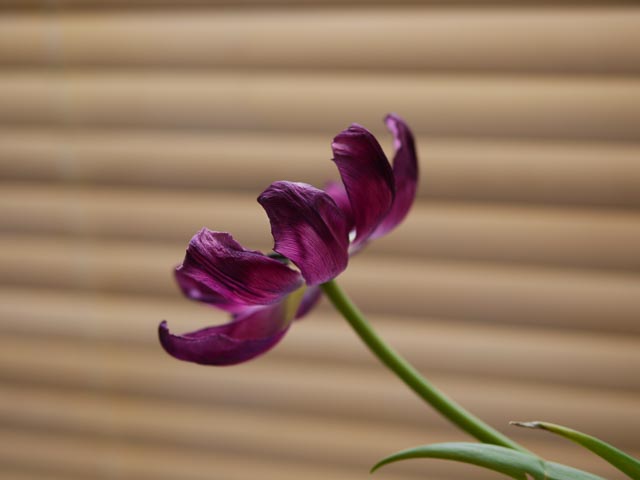
'Nature' film mode
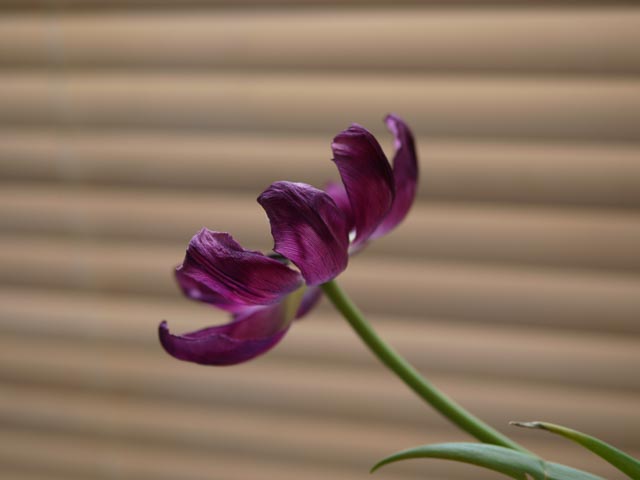
'Smooth' film mode
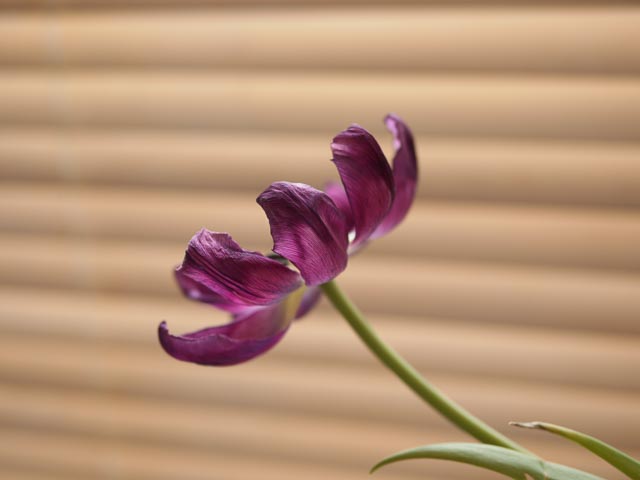
'Nostalgic' film mode
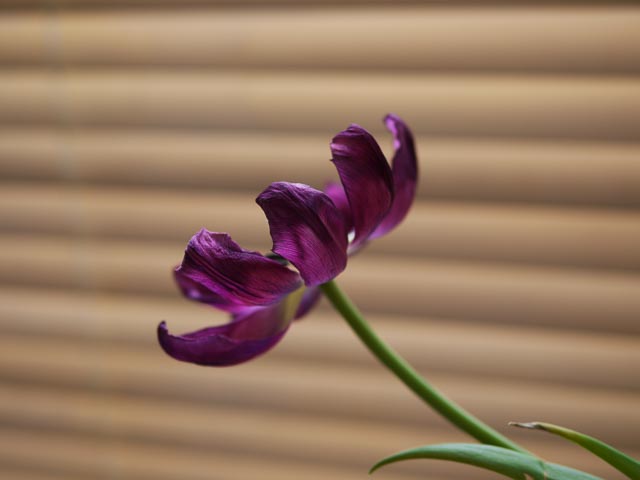
'Vibrant' film mode
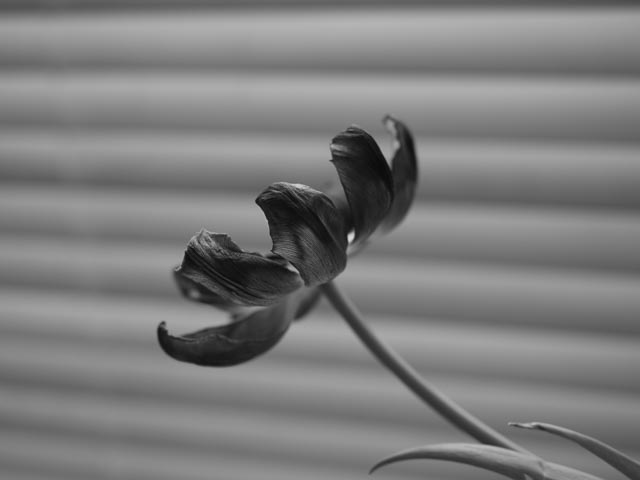
'Standard B&W' film mode
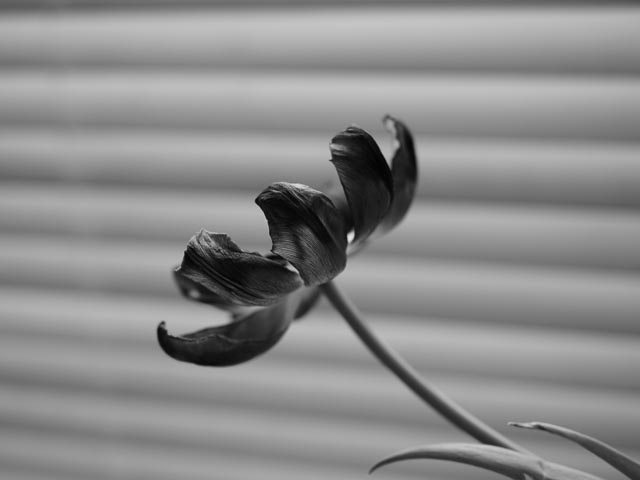
'Dynamic B&W' film mode

'Smooth B&W' film mode
'Dynamic B&W' film mode
And here are some 'real' photographs taken in JPEG mode with the 'Dynamic B&W' film mode (but these have all be tweaked very slightly in Adobe Lightroom).
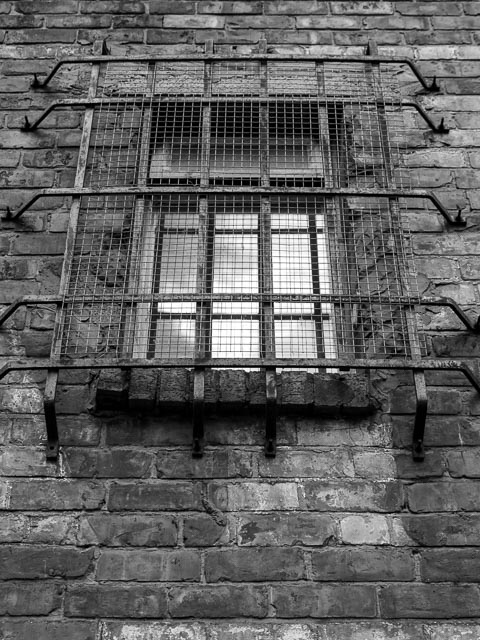
Lens: Leica DG Summilux 25mm f/1.4 Asph.

Lens: Leica DG Summilux 25mm f/1.4 Asph.

Lens: Olympus M.Zuiko Digital ED 40-150mm f/4.0-5.6 R (focal length: 70mm)

Lens: Leica DG Summilux 25mm f/1.4 Asph.
'Nature' film mode
And here are some 'real' photos (albeit very tame photos just taken in a local park!) taken in JPEG mode with the 'Nature' film mode (Again, these have all be tweaked very slightly in Adobe Lightroom). These photos were all taken with the Olympus M.Zuiko Digital ED 40-150mm f/4.0-5.6 R lens set to 150mm.




